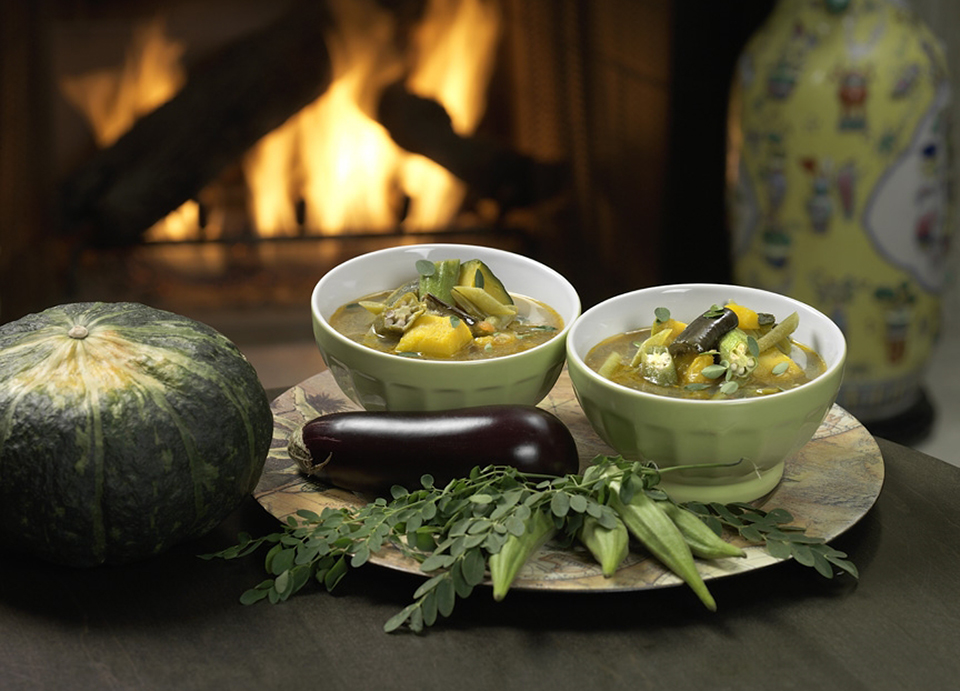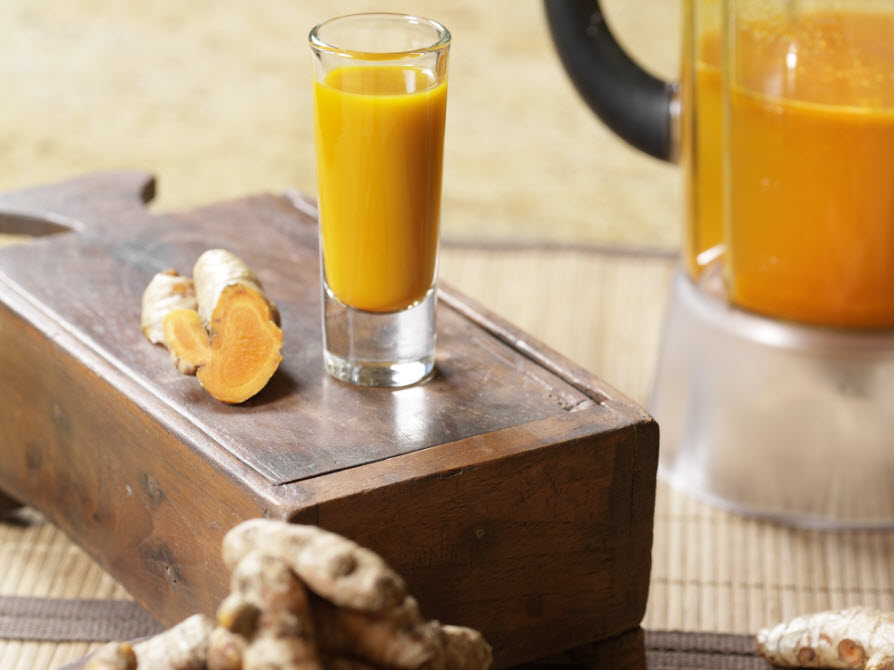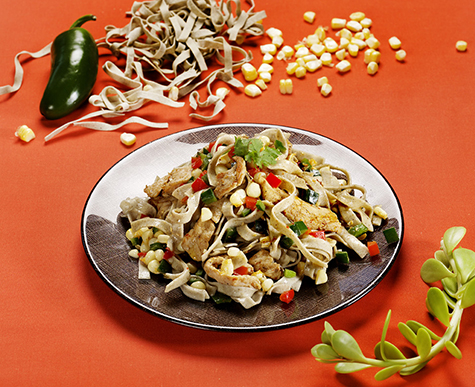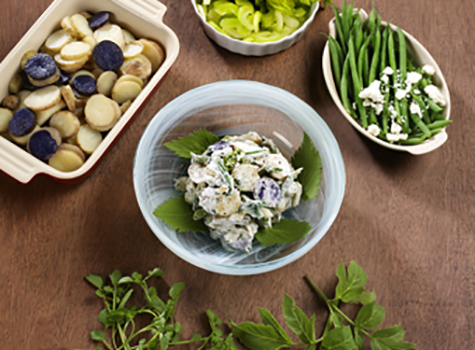Eat Up! Form Follows Functional Food


In today’s food-conscious world, many of us want to get more benefits from the food we eat. Functional foods provide just that. A functional food is a natural food or manufactured food that has benefits beyond basic nutrition and calories.
According to Mayo Clinic nutritionist Jennifer K. Nelson, R.D., L.D., “All foods are functional because they provide varying amounts of nutrients and energy to sustain growth or support vital processes. However, functional foods are generally considered to offer additional benefits that may reduce the risk of disease or promote optimal health.”
Functional foods can also act like health supplements. For instance, the leaves of the moringa plant that I love so much can be considered a functional food (see Recipes for my Moringa Vegetable Soup, Grilled Artichokes with Moringa Dip and Moringa Chiffon Muffins, which is from The Age Beautifully Cookbook).
Moringa leaves are often dried and ground, and the resulting green powder is added to soups or sauces to make them healthier. I use moringa powder to add the FoodTrients calcium, potassium, vitamin A, and vitamin C and their health benefits to my Moringa Dip. Calcium promotes bone and tooth growth, potassium enhances nerve and muscle function, vitamin A strengthens skin and hair, and vitamin C helps the body resist infection. As you see, I’ve taken my dip for veggies to the next nutritional level without compromising on flavor.
Ashitaba
Ashitaba is another plant that is mostly used as a dietary supplement, especially in Japan. It’s considered a functional food because the benefits from eating it are so great. It contains high levels of vitamin B12, which boost energy and protect the heart and brain. Its chlorophyll purifies the blood, manages bacterial growth, detoxifies, and protects against certain cancers. Compounds unique to this species of plant, called chalcones, have anti-tumor, antibacterial, and wound-healing properties. I created a recipe with ashitaba for the Age Beautifully Cookbook that turns a food favorite into a tasty more functional dish – Ashitaba Potato Salad.
 Turmeric
Turmeric
is an amazing antioxidant and anti-inflammatory. People have begun to add it to more than just orange juice and curry powders. Temple Turmeric offers a line of turmeric juices that are spicy and functional. They call them “yoga in a bottle.” They are meant to be enjoyed like sports drinks, but their juices can also be used as marinades for chicken or fish. I love cooking with turmeric and have developed a number of recipes for my cookbooks. For a drink full of turmeric power, try my Fresh Turmeric Juice.
Chia
Another great functional food is chia. They provide lots of fiber (an excellent detoxifying FoodTrient) and omega-3 fatty acids (a powerful anti-inflammatory FoodTrient), in addition to stabilizing your blood sugar. I like to eat the tiny white or black seeds after they’ve been soaked in liquid for 20 minutes. My Chia Frescas recipe is wonderful if you like the taste and texture of chia seeds. But you may just want the health benefits of those tiny seeds without crunching on them. If so, I’ve found a pasta company that adds chia seeds to its wheat pastas (they are not gluten-free, but they are vegan). Al Dente Pasta Company makes a whole line of pastas infused with ground chia seeds. Called BonaChia, they are a bit chewier than traditional pasta, but they carry a nutritional punch. To complement the flavor of this unique pasta, I’ve created a southwestern-inflected recipe with ground pork, chilis, corn, and peppers. I think you’ll love it.
Chia Fettuccine with Southwestern Pork and Veggies
 You can use ground turkey in place of the pork, if desired. Try adding chopped onion, tomatillos, and/or jalapenos for more kick. Drizzle with crema Mexicana or sprinkle with cotija cheese if you’re not worried about calories. You can buy piment d’Espelette—a French chili pepper— as a powder or paste at specialty food stores, or substitute hot paprika to taste.
You can use ground turkey in place of the pork, if desired. Try adding chopped onion, tomatillos, and/or jalapenos for more kick. Drizzle with crema Mexicana or sprinkle with cotija cheese if you’re not worried about calories. You can buy piment d’Espelette—a French chili pepper— as a powder or paste at specialty food stores, or substitute hot paprika to taste.
Serves 4
Ingredients
1 lb. sliced pork loin
1 tsp. salt or salt substitute
1 tsp. minced garlic
¼ tsp. black pepper
½ tsp. dry mustard
½ tsp. ground cumin
¼ tsp. chili powder
1 tsp. piment d’Espelette (or regular paprika or crushed red peppers)
4 Tbs. olive oil, divided in half
½ cup chopped red onion
1 cup chopped red bell pepper
¼ cup sliced jalapeños
1 cup chopped pasilla chile (or 4 oz. canned green chiles or 15 oz. canned corn)
1½ cups fresh corn kernels
1 package (10 oz.) BonaChia Fettuccine (or regular pasta or brown rice)
Garnish
¼ cup chopped scallions
2-4 Tbs. black or white chia seeds
4 Tbs. Parmesan cheese (optional)
Procedure
- Mix the pork and the spices until evenly incorporated.
- In a cast-iron or heavy-bottomed pan, cook the meat in 2 Tbs. of the oil over medium heat for about 5 minutes, stirring often.
- Add the vegetables and remaining oil to the pan. Cook another 5 minutes.
- Cook the pasta according to package directions. Toss with the meat and vegetables.
- Garnish with the chopped scallions, Parmesan cheese (if using), and chia seeds.

